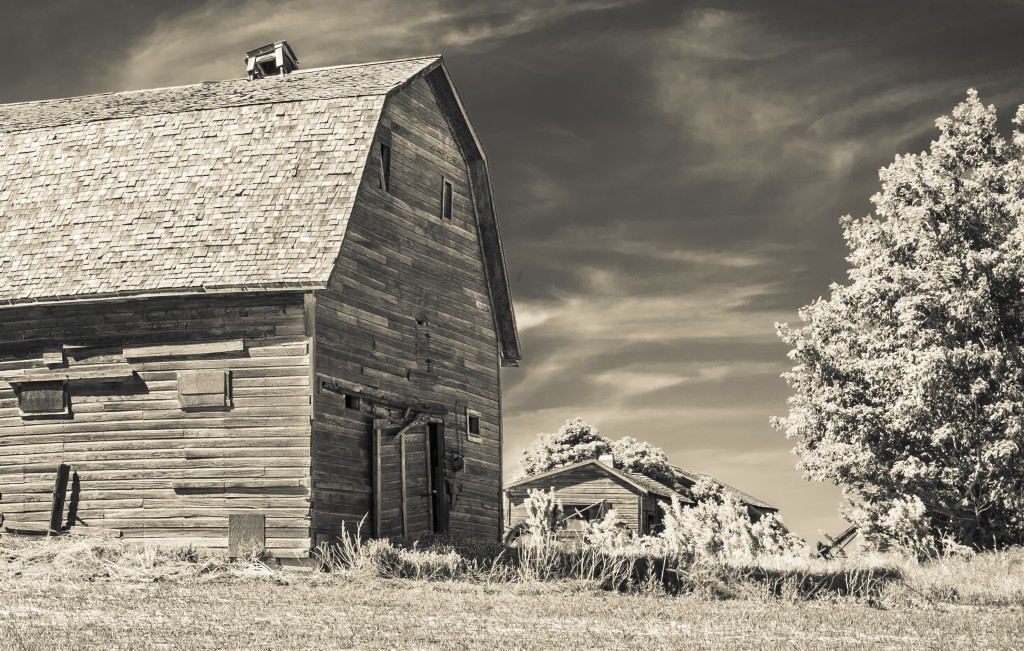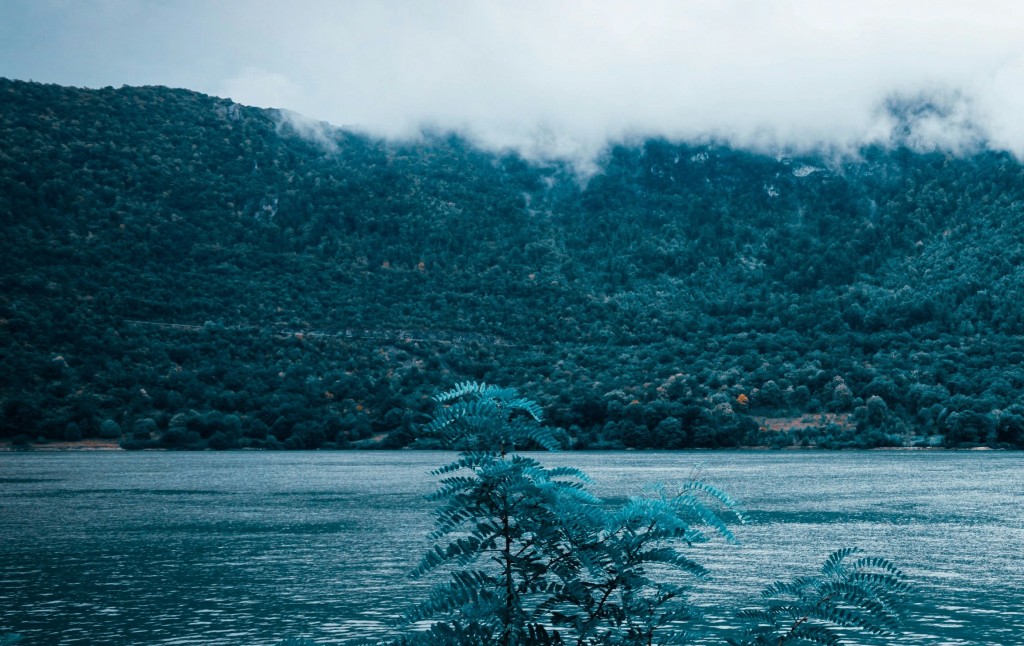By John Sammon
A procession of covered wagons in a single file line, 40 wagons trundling along a wheel-rutted dirt trail, had pulled to a halt. There in front of them were Native American Indians, six riders mounted atop their ponies, a breed of horse called the Spanish Mustang, a smaller horse than the larger draft horses of the pioneers.
"What do they want?" Seth Hawkins asked, concern etched in the features of his bearded face.
"I don't know," called Albert Jackson, riding in the lead wagon and the settler who the pioneers had elected to serve as trail boss of the wagon train. "I think they mean us no harm. If they did, they wouldn't sit there like they are."
Young Jack Hawkins, 12 years old, the son of Seth, stared at the Indians, fascinated. He did not have the fear of them as the adults had.
The Indians were members of the Omaha Tribe, although the settlers on the wagon train did not know this. To them, all Indians were considered the same, a potential threat. The Omahas had a history of peaceful relations with the whites who, with every passing year, increasingly passed through or took up residence on land the Omahas claimed as their own, the state of Nebraska, in 1880.
In fact, several of the men in their wagons had reached for the rifles and muskets they carried just in case, although the size of the wagon party made an attack by six mounted Indians highly unlikely.
"I'll go and see what they want," Jackson said, climbing down from the wagon seat. His wife Marie reached and clutched his hand.
"It's alright," Jackson told her.
"You want my help?" Seth Hawkins called from his wagon.
"No," Jackson answered.
Jackson stepped forward over the ground to within 30 yards of the Omahas. He held a rifle and a Springfield carbine but kept the weapon pointed down in a non-threatening position.
The Omahas seated atop their ponies stared stolidly, seeming sphinxlike, silent, and without emotion. They were armed with outdated single-shot flintlock muskets, but they kept these tied to their ponies in rawhide sheathes.
Jackson raised a hand in greeting.
One of the Omahas, evidently their leader, pointed to the west and made some hand signals. Jackson did not understand their meaning, but he felt he could guess the Omahas' intent. He turned and walked back to his wagon.
"Hand me that sack and give me some corn dodgers," Jackson told his wife.
Marie Jackson complied, taking a burlap sack and placing round-shaped biscuits inside. The biscuits were baked with corn meal, pork, salt, and fat. She handed the sack to Jackson. Her daughter Alyssa peeked at the Indians behind the wagon's canvas cover.
Jackson walked toward the Omahas, placed the sack on the ground, and withdrew, returning to his wagon.
The Omaha who had hand-signaled looked at the man next to him. The man came forward on his pony, leaned over from his tanned hide pad saddle, and picked up the sack. He then returned to his companions and made a wave at the settlers. He and his cohorts turned their ponies and rode off.
"I musta' guessed right," Jackson said, climbing up and rejoining his wife and daughter in the wagon. "They wanted us to give them something, like paying a toll to cross their land."
Two weeks later, they were almost to their destination. They had come from as far away as states on the Eastern Seaboard, Missouri, or a dozen other states. Disaffected people, they were looking to make a new start in life. The reasons for their coming were as different as the people themselves. Perhaps they were fleeing creditors, a failed business, a criminal record, or just from a simple wanderlust. Whatever their problems or failings, a person could pack up and come out here and reinvent themselves. That's what they believed.
They reached the Platte River and followed alongside the meandering current of its sluggish brown-colored water. The narrow trail bore the rut marks of thousands of prairie schooner wagons that had come before.
To lighten the wagon load and save the strength of the pulling horses or oxen, many of the immigrants walked alongside their wagons all the way from the start.
They brought the beginnings of their livestock with them. Calves six months old were tethered to the backs of wagons, and pigs and chickens were kept in the wagons. When the party stopped at sunset to camp, the chickens could be turned loose to run around.
Seth Hawkins, his wife Emily, daughter Allison, son Jack, and Albert Jackson, his wife and daughter, had decided to stop at a point near Birdwood Creek. This was a tributary of the Platte River, with sand bluffs seen in the distance. They would call Western Nebraska their new home. They would be joined by a dozen other families from the wagon party who would settle nearby.
The remainder of the party would continue into Wyoming, Oregon, or south to California.
Nebraska was a flat, treeless prairie of sparse rainfall and short grasslands. Despite its lonely and forbidding appearance, it appealed to settlers because of the Homestead Act of 1862. For a small fee and registration, the U.S. Government would give 160 acres to any family that simply "worked the land," plowing it for cultivation and living on the property for a mere six months.
Hawkins would plow the prairie and grow corn. He would raise horses. That was his dream, to become a wealthy rancher.
The first thing to do was construct a shelter. Time was of the essence. A home and protection against the elements had to be built quickly. Seth Hawkins only had a sketchy knowledge of the severity of Nebraska winters. There were no trees to fall for wood in the immediate area for a cabin, so sod would have to do.
Hawkins and his wife Emily had brought in their wagon as much as they could carry, and to begin with, they would sleep in the wagon at night. Most of the goods packed were food items: hardtack biscuits, flour, rice, coffee, cured meat, cans of beans, and salt in a barrel. The only two luxuries were the China dinner plates Emily had packed and a small Church Company pump organ made of cherry wood. In addition, there were farm implements, a plow, a hand axe, a shovel, a mallet, a sickle, and seeds for crops, corn and wheat.
No thought had been given to the sparse rainfall here. Seth Hawkins needed to gain experience in farming as he had been a clerk in Missouri. To him, it didn't matter. He was filled with optimism.
"Get on!" Seth called as he guided a horse by clutching its leather bridle. The horse dragged a five-foot piece of wood tied with rope behind and weighted down with stones to flatten turf and break up dirt clods in preparation for plowing. His son Jack helped guide the horse, flicking and snapping its behind with a switch stick to keep it moving.
"You ready to take a rest?" Seth asked.
"Yes, Pa," Jack replied.
Seth halted the horse and stroked its mane. The animal had from strenuous pulling a rung of foam around its mouth.
"That's enough for today. It looks like we've got company," Seth said, pointing to a two-wheeled cart approaching, pulled by a mule.
Riding in the cart was the Jackson family coming for a visit. Way out here on the plains, without another person or structure visible for miles around, a person could fall into melancholy, a depression from living in a wide open space with little human contact.
Seth Hawkins used sod to build the walls of his house. Fields of buffalo grass had tightly wound roots that would hold the soil in place. Using an axe, he cut the sod into squares resembling bricks and stacked these with Jack's help. The work went on from dawn to dusk and depended on the weather, but the days were sunny so far.
As his father's helper, Jack would lug water from the river, carrying it in buckets, and gather firewood if it could be found. Since only a few cottonwood trees existed along the river, he mostly collected buffalo chips, the dung of the buffalo herds. Buffalo chips were a slow-burning fuel that provided a reliable fire and also gave off no odor.
Jack also helped his mother cook meals and wash dishes, and when his mother was busy elsewhere, he looked after his younger sister, Allison, who was two years old.
For food, Seth Hawkins hunted game, including wild turkeys, rabbits, and sometimes deer, antelope, and an occasional elk. The buffalo that had once covered the plains in their thousands had long since been hunted to the point they had disappeared.
Seth would go on his horse to hunt on these excursions and sometimes took along Jack, whom he taught to shoot his Springfield rifle. Shot and powder for the rifle had to be used sparingly. Supplies could only be acquired in the small town of Lodgepole at the Union Pacific Railroad junction 50 miles to the south.
A month went by. It was September.
Seth plowed furrows in the ground with a hand-guided horse-drawn plow. Corn would have to wait to be planted for the following April, but wheat seeds have been planted now. Still, it would be a lean first year. The family would have to depend on hunted game animals, mostly small, such as rabbits, dove birds, and squirrels.
As Seth Hawkins stacked the sod bricks forming walls to a width of two feet, the sod hut the pioneers called a "soddy" took shape. Rather than a typical house, it resembled a dugout structure, a simple windowless square hut half dug into the ground. Windows would later be carved out when time permitted the following spring and covered with greased paper as window glass was hard to get. The house had a wicker framework roof constructed of wood support beams from a tree felled at the river. The roof support beams were covered with tar paper and sod squares.
Seth was so happy when the roof went up that he danced an Irish jig at completion.
One major project was digging a root cellar. A large hole was dug into the ground, which would preserve food by keeping it from freezing during winter and cool in summer.
At night, when the work ceased, the family would sit around the central fire on the few wooden chairs they had brought with them. A traditional fireplace had yet to be built, and the stones for it would have to be acquired. In the meantime, Seth built a crude chimney built of sod bricks plastered over with mud that had dried and used a twisted metal piece bent into a pipe that allowed smoke to funnel outside.
In their leisure moments, the family could read from a Bible, or Seth would often tell them stories or take out a fiddle and play. He was a poor musician. Emily would play the organ. It distracted from the awesome silence of the immense prairie outside.
It was so quiet at night except for the crickets.
Jack began to notice a change in Emily's demeanor. She read the Bible more often now, clutching it as though dependent on it, and sometimes, she had long, furtive periods of silence.
This wasn't at all like her.
Jacksons, who lived two miles away, came to visit in their cart. The men talked about their properties, building plans, goals, and dreams. The women talked about their families, cooking, sewing work and chores, and religious beliefs. They were Protestants.
The visit prompted Emily Hawkins to emerge from the depression she had been suffering.
Jack was left alone with the Jacksons' 12-year-old daughter Alyssa. She was dressed in a red-colored gingham dress of dyed cotton with a sunbonnet on her head. Her feet were bare. She had blonde hair in pigtails and a freckled face.
Jack loved her. His heart pumped whenever he saw her. She smiled at him and watched him feed grain to the family’s 12 chickens. But Jack was afraid to talk to her, afraid she wouldn't like him.
Jack kept his silence.
"It's nice weather today," Jack finally said haltingly.
"You Hawkins boy," Alyssa teased.
She came close to Jack.
His face dipped and blushed red. "It's nice weather today," Jack said again.
"You already said that." Alyssa playfully chided him.
She whispered shily in his ear. "How could you be so noble?"
"I have to go," Jack said, running around the side of the chicken coop his father had built and out to where the horses grazed on prairie grass. He wasn't certain if she was mocking him, and he didn't want to find out.
Then, when it was time for the Jacksons to return to their farm, Jack felt that he had to find a way to undo his cowardice. To let Alyssa know how much he adored her. He couldn't tell her directly to her face and wasn't brave enough.
The Jackson's wagon was pulling away. Alyssa saw him. He waved to her.
In the days following that visit, given the loneliness of the prairie and Seth Hawkins's absence working the land or conferring with other farmers bartering or buying needed farm implements, Emily Hawkins' depression returned.
At the end of that month, their child, two-year-old Allison, died. Emily, mute with grief, did not sob, fearful that if she did, she might lose her mind. She and Seth remained silent in their anguish, going about their business and avoiding each other as much as possible, unable to express their feelings.
The child was laid out in a tiny coffin made for her and dressed in a silk skirt that reached down to her knees. Neighboring farmers, including the Jacksons, visited and expressed their condolences. Burial was held in the back of the sod house, a little square patch of ground. The gathered mourners sang the hymn Nearer My God to Thee.
The cause of death remained unknown, although infant mortality was high, with a dozen possible diseases from scarlet fever to dysentery caused by contaminated food.
Jack's parents seemed after this to distance themselves from each other as though the pain of the child's death was blamed on each other. Or was it a sense of personal guilt? Emily Hawkins would kneel at the grave for long periods and talk to the child as though the dead child could be brought back to life.
In early October, Seth said, "Jack, I have to go to Lodgepole to pick up supplies. While I'm gone, you'll be the man of the house."
"Yes, sir," Jack said.
"You'll take care of your mother while I'm gone?"
"Yeah, Pa."
"She'll depend on you."
Jack watched his father depart in a buckboard wagon he had purchased from a farmer named Wilcox. He would be gone for a week or more. Albert Jackson, the neighbor, had promised to look in on the boy and his mother from time to time.
Days passed.
Emily Hawkins hung out laundry to dry on a cord of rope, and the wind was whipping, so the sheets and clothes flapped noisily in the wind. The dust was blowing. The loneliness of the place, the immensity of the flat land, Emily felt ill. She put a hand over her mouth and ran into the sod cabin.
Jack had retrieved a wandering stray calf and returned with it when he heard his mother scream.
He raced to their house and saw four Indians approaching their front door. They were standing there, and Jack's mother was shrieking, holding Seth's carbine, though she didn't know how to fire it.
Jack ran. He got to the front door. He immediately saw the Indians were unarmed. They had their palms out. They had no horses.
They were on foot, and their clothes were ragged and filthy. They were pleading.
Emily dropped the rifle and ran back inside the house, sobbing.
Jack saw the Indians meant no harm. He didn't know it, but they had come off the Omaha Reservation, where they had been confined by the U.S. Government.
Jack could see they looked starved. Their hands were out. They were begging.
Jack went to a wood bin and, lifting the lid, removed some smoked carp fish his father had caught in the Platte River. He handed these to the Indians.
They said not a word but made beseeching mumbling sounds.
They took the fish, bowed in respect, and left.
Seth Hawkins told his son two weeks later, "Jack, I'm taking your mother to live with the Barries at their farm. They have three sisters there. I think it will be easier on your mother for a time."
Jack understood his mother's need for female companionship.
While his parents were away, Seth took Jack to stay with the Jackson family.
Jack did his share of the chores, helping at the Jackson farm. He was feeding and watering chickens when Alyssa Jackson came and sat next to him.
"How do you like my new hair bow?" she asked, proud of the strip of silk her mother had tied in her hair.
Jack looked down at the ground.
"Don't you like me?" Alyssa asked.
Jack couldn't stand it anymore. He leaned over, kissed her cheek, and ran toward the Jackson cabin.
Alyssa held the spot where he'd kissed her. She was thrilled. A coy thought crossed her mind. "Is this how love feels like?"
Grade Level: 7th Grade
Age Range: 12-13 years old

John Sammon holds a Bachelor of Arts (BA) in Journalism. He is a freelance writer and former newspaper reporter (Mountain Democrat in Placerville, California). He is also a novelist, historical fiction writer, and nonfiction book writer. A political pundit and column writer, he also writes comedy and screenplays. He played in General Hospital, is a film narrator, and is a member of the Screen Actors Guild. He lives with his wife near Pebble Beach.
© 2024 tebokkai
Photo Credit: Scott Prokop
All texts and some images presented on this blog are the property of http://www.linguavera.org. These educational articles can be used for didactic purposes only. Translating these articles for publication on other websites or publications in print is strictly forbidden. Republishing full texts from this blog is not allowed. Publishing excerpts from any article part of this blog on other websites or publications in print requires permission. These texts cannot be used for commercial or promotional purposes. Citation of the original source is required. Do not remove copyright.




Lasă un comentariu